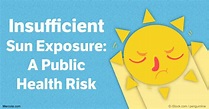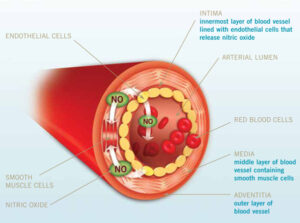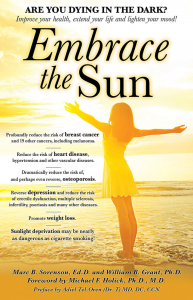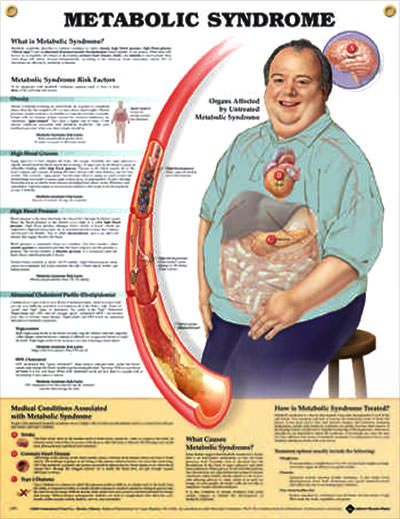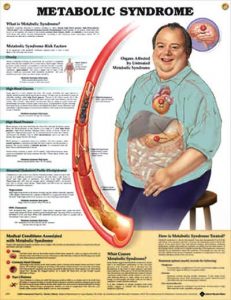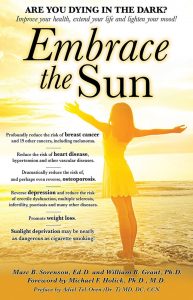Diabetes and sunlight. Is there a connection? By Marc Sorenson, EdD.
Diabetes associates with sunlight. Yet, please understand that lack of sunlight is not the primary cause of the disease. Nevertheless, sun exposure can act as an adjunct to the primary healing methods, which are nutritional changes and more exercise. My wife and I saw first hand, the efficacy of sunlight and good nutrition. During our 15 years at our former health institute, our clients lost more than 100 tons of fat. In addition, two-thirds of diabetic guests were free of all medication in less than two weeks. If clients stayed four weeks, there was about an 85% cure rate, and the remainder profoundly lowered medication. Sunny Southern Utah furnished the sunlight; we furnished the nutrition, exercise and expertise.
What is diabetes?
Diabetes is a disorder of chronically high blood glucose and it leads to blindness. It also leads to nerve damage, heart disease, kidney disorders, neuropathy and other maladies. Furthermore, it is so deadly that some experts believe it will ultimately destroy our health care system. Due to a change to a high fat, junk-food diet, this destruction of health care presently exists in China. In addition, diabetes was the seventh leading cause of death in the United States in 2017. Thus, 83,564 death certificates listed diabetes as the cause of death. Furthermore, it is important to understand that death certificates underestimate the carnage effected by diabetes. Most noteworthy is that diabetes contributes to far more than 83,564 deaths. Therefore, when researchers listed diabetes as the underlying or contributing cause of death, the number of deaths skyrocketed to 270,702.
Two forms of the disease: Both associate with lack of sunlight.
Diabetes comes in two forms: (1) Type-one diabetes occurs due to autoimmune response, thus damaging the insulin-producing islet cells. This damage consequently reduces production of insulin, which is responsible for removing glucose from blood and storing it in tissue. Only about 5% of diabetics are type-one. (2) Type-two diabetes, in which there is sufficient insulin, yet blood glucose remains high due to insulin resistance. This discussion involves type-two.
Most noteworthy, as with heart disease, a paucity of sunlight is not the primary cause. Rather, deleterious nutrition habits are the main reasons. These habits are principally high meat consumption, sugar consumption, egg consumption, low consumption of fruits and vegetables, and too many fried foods. In the case of type-one diabetes, milk consumption is probably the most important nutritional factor. Yet, sunlight may act as a prophylactic against both types of the disease. Especially relevant is that diabetes probably does not kill someone directly. Rather, it is the diseases resulting from diabetes, which lead to death.
The influence of sunlight on this disease.
There are several studies showing a relationship between type-two and sun exposure. Hence, one paper showed that blood-sugar levels were lower during summer, indicative of a protective effect of summer sun. Another, a meta-analysis, produced moderate evidence that recreational sun exposure associates with a reduced risk of type-two . The study materialized because the researchers observed that higher vitamin D levels associated with lower diabetes risk. Yet, vitamin D supplementation did not associate with lower risk. They hypothesized sun exposure could have influences unrelated to vitamin D, and such seems to have been the case.
Perhaps the most important investigation showed that women who had “active sun exposure habits” had a 30% decrease in the risk of type-two diabetes. It seems like being a regular participant in sunny activities is a good idea, no? Therefore, enjoy regular, non-burning sun exposure, avoid junk foods and prevent or heal this disease.
For more information on sunlight and health, visit sunlightinstitute.org. In addition, read my book, Embrace the Sun.
Happy Sunning!
Flesh-eating Bacteria and genitals. The drug companies strike again. By Marc Sorenson, EdD.
What is flesh-eating bacteria of the genitals?

Flesh-eating bacteria of the genitals is a rare, alarming disease associated with a class of type-two diabetes drugs (SGLT2 inhibitors). While many people take these drugs, only a few are unfortunate enough to contract the disease. So the publication, Medical Express, states, “one day you notice pain, redness and a foul odor in your genital area.” As much as I wanted to include an image of this disease, it was too nauseating for me to do it.
Do flesh-eating bacteria really eat flesh?
Of course, bacteria infect, and they don’t eat flesh. The term flesh-eating bacteria is probably used as a description for the rapidity of the infection.
There is a better way to stop diabetes than using a drug that could cause flesh-eating bacteria.
First of all, the real tragedy of this finding is that type-two diabetes is the easiest of all degenerative diseases to reverse. And, I might say, the easiest to prevent. So we don’t need a diabetes drug that could cause flesh-eating bacteria of the genitals. In the health resort that my wife, Vicki and I founded, we had spectacular results. Two-thirds of diabetic clients ceased all medications in about 11.6 days (and no flesh eating bacteria occurred). And if the clients stayed for a month, 85% were off all medication. Furthermore, most of the remaining 15% dramatically reduced their medication. The people became well due to proper nutrition, exercise and plenty of sunshine. So, knowing that, why would the medical community not use that simple method? The answer: there is no money to be made by pharmaceuticals when diabetics heal themselves because of changed lifestyles.
Is flesh-eating bacteria a new phenomenon?
Flesh-eating bacteria have been around for some time, but until the advent of these drugs, diabetes has not been involved. The “old” flesh-eating bacteria disease was called necrotizing fasciitis–another rarity due to strep bacteria. It is most noteworthy that the disease is most common in seasons of low sun exposure, with the highest incidence in winter. Probably, sun-stimulated vitamin D produces the cathelicidins (an antimicrobial peptide) necessary to keep the disease at bay during the summer.
A great new book.
In our book, Embrace the Sun, Dr. William Grant and I make a calculation. For each death caused by diseases associated with sun exposure, there are 328 deaths because of diseases associated with sun deprivation. And two of the diseases associated with sun deprivation are type-two diabetes and necrotizing fasciitis.
The message for preventing diabetes stopping the use of flesh-eating drugs is this: Stop eating junk foods and start getting some regular, non-burning sun exposure (without noxious sunscreens). Happy sunning!For more information on the marvels of sun exposure, visit http://sunlightinstitute.org/ Also read the new book, Embrace the Sun.
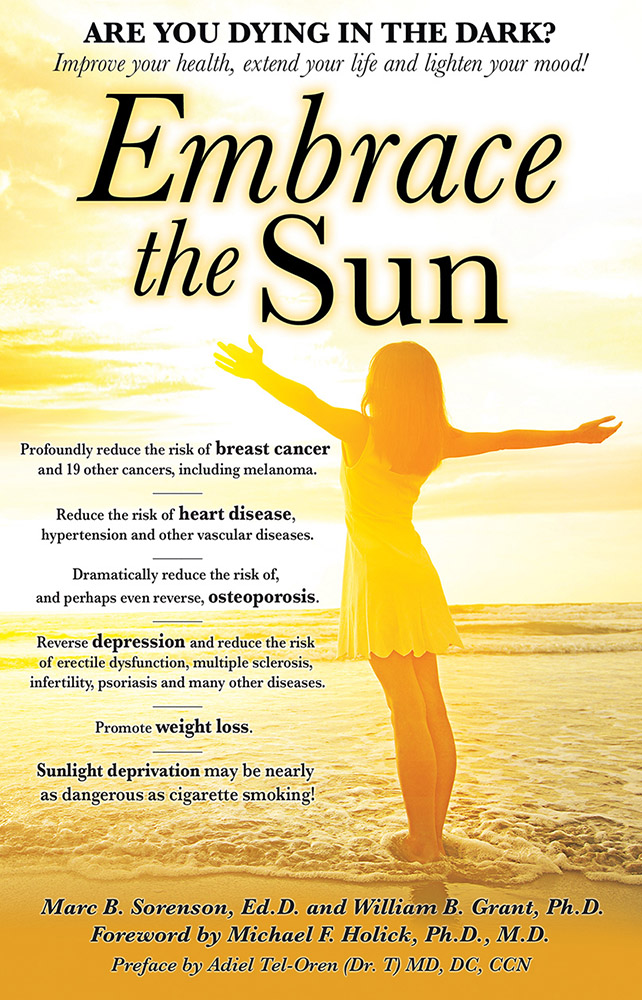
Bright sunlight and diabetes by Marc Sorenson, EdD.
Bright sunlight is important for health. And for the purpose of this article, we are talking only about the effects of sunlight on type-two diabetes. Type-one diabetes will be mentioned only briefly and will require another article at a later date.
First of all, we will tell you what diabetes is, then we will explain its devastating consequences. Finally, we will explain the relationship between diabetes and bright sunlight. So what is diabetes? It is a pernicious and deadly disease which is due to chronically high blood sugar levels.
What is type-one diabetes? Can bright sunlight help?
In addition, diabetes comes in two types: First of all, Type-one. It is usually due to an autoimmune response, which damages the insulin-producing islet cells of the pancreas. Thus, the production of insulin is reduced. Insulin is responsible for removing glucose from the blood and storing it in the cells. And without insulin, a person has type-one diabetes. Type one comprises about 5% of diabetes cases. And, sunlight may help this less-common type of diabetes. Hence, I would suggest that you read our new book, Embrace the Sun, for that information.
What is type-two diabetes? Can bright sunlight help?
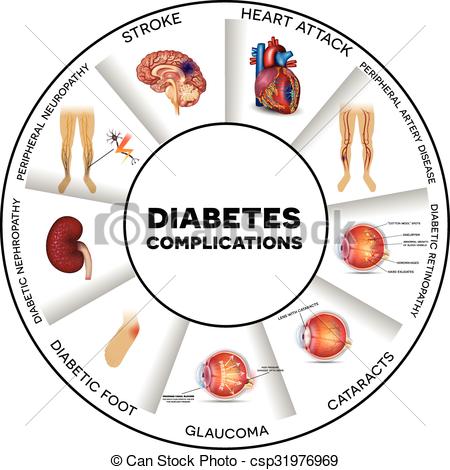
Especially relevant is the fact that that type-two diabetes makes up about 95% of all diabetes cases. The disease is deadly and increasing so rapidly that it threatens to overwhelm our health-care system. For example, the health-care systems in the state of Minnesota is on the brink, because fully one-third of all adults are diabetic.[1] Amputations, heart disease, blindness and neuropathy are just a few of the deleterious effects of diabetes. Yet, this disease is the easiest of all degenerative diseases to reverse.
Bright sunlight is not the cure for diabetes, but it can help.
Bright sunlight is not the cure for diabetes, nor is lack of bright sunlight the cause. Nevertheless, bright sunlight can help us to prevent and reverse the disease. First of all, let’s state the real cause of diabetes: the consumption of junk foods filled with fat and sugar. What one eats is all important. Enough said. Let’s now talk about bright sunlight and diabetes for those who are not eating perfectly. And remember that bright sunlight is only an adjunct for prevention and cure.
The research on bright sunlight and diabetes.
So how much does bright sunlight influence diabetes? According to recent research, “Increased bright sunlight exposure may be associated with a reduced risk for type 2 diabetes and heart disease by lowering blood insulin and lipid levels.”[2] The study showed that people who were exposed to bright sunlight had lower insulin levels and blood-sugar levels (good result). For every extra hour of bright sunlight exposure, insulin levels decreased by 1.27%. Those who were exposed to bright sunlight also had lower insulin resistance (-1.36%), better islet-cell function and lower triglycerides.
Other important research on bright sunlight exposure and diabetes.
Also, one paper showed that blood-sugar levels were lower during the summer, (there is more bright sunlight in summer).[3] Another demonstrated that exposure to sun lamps increased insulin secretion.[4] [5]
Finally, recreational exposure to bright sunlight lowers risk of diabetes.
In addition, a meta-analysis produced moderate evidence that recreational sun exposure (more bright sunlight) is associated with a reduced risk.[6] Also, the study was undertaken because the researchers observed that higher vitamin D levels were consistently associated with lower diabetes risk. Yet, vitamin D3 supplementation was not associated with lower risk. They hypothesized that sun exposure could have influences beyond vitamin D, and such seems to have been the case.
Another of the more important investigations showed that women who had active bright sunlight exposure had a 30% decrease in the risk of type-two diabetes.[7]
The bottom line is that bright sunlight can reduce the risk of type-two diabetes. Do your sunning in a non-burning, safe fashion. And remove the junk food from your life. Enjoy good health!
For more information, read my book,
Embrace the Sun, and visit http://sunlightinstitute.org/protective-effect-sunlight-diabetes/
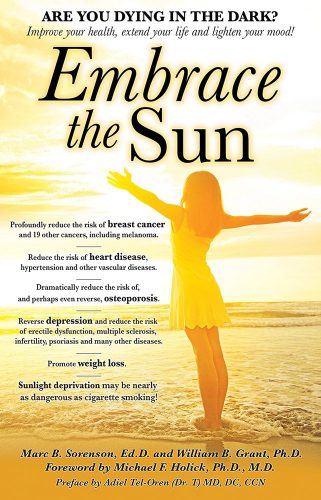
[1] https://www.mprnews.org/story/2012/01/17/diabetes-part1
[2] Noordam R, Ramkisoensing A, Loh NY, Neville MJ, Rosendaal FR. Associations of outdoor temperature, bright sunlight and cardiometabolic traits in two European population-based cohorts. J Clin Endocrinol Metab. 2019 Feb 12. https://www.ncbi.nlm.nih.gov/pubmed/?term=Noordham+R+Associations+of+outdoor+temperature%2C+bright+sunlight
[3] Ishii H, Suzuki H, Baba T, Nakamura K, Watanabe T. Seasonal variation of glycemic control in type-2 diabetic patients. Diabetes Care 2001;24;1503.
[4] Colas C, Garabedian M, Fontbonne A, Guillozo H, Slama G, Desplanque N, Dauchy F, Tchobroutsky G. Insulin secretion and plasma 1,25(OH)2D after UV-B irradiation in healthy adults. Hormone and Metabolic Research 1988;21:154-155.
[5] Song Y, Wang L, Pittas AG, Del Gobbo LC, Zhang C, Manson JE, Hu FB. Blood 25-hydroxy vitamin D levels and incident type 2 diabetes: a meta-analysis of prospective studies. Diabetes Care. 2013 ;36(5):1422-8.
[6] Shore-Lorenti C, Brennan SL, Sanders KM, Neale RE, Lucas RM, Ebeling PR. Shining the light on Sunshine: a systematic review of the influence of sun exposure on type 2 diabetes mellitus-related outcomes. Clin Endocrinol (Oxf). 2014 Dec;81(6):799-811.
[7] Lindqvist PG, Olsson H, Landin-Olsson M. Are active sun exposure habits related to lowering risk of type 2 diabetes mellitus in women, a prospective cohort study? Diabetes Res Clin Pract. 2010 Oct;90(1):109-14.
Vitamin D levels: sufficient for winter? By Marc Sorenson, EdD
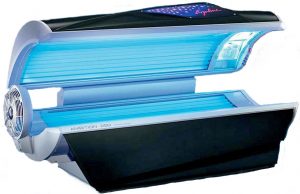 Vitamin D levels and sunshine are exceptionally important to human health, and therefore we should be aware of vitamin D science. The Vitamin D Society of Canada is always at the forefront of the research on vitamin D levels and sunlight. And, they deliver press releases to keep people from Canada (and the world) apprised of new and important findings. Hence, I would like to comment on the salient points of their latest release. As I do so, it is especially relevant to note that vitamin D levels are surrogate measures for sun exposure.
Vitamin D levels and sunshine are exceptionally important to human health, and therefore we should be aware of vitamin D science. The Vitamin D Society of Canada is always at the forefront of the research on vitamin D levels and sunlight. And, they deliver press releases to keep people from Canada (and the world) apprised of new and important findings. Hence, I would like to comment on the salient points of their latest release. As I do so, it is especially relevant to note that vitamin D levels are surrogate measures for sun exposure.
The relationship of vitamin D to sun exposure
Ninety percent of vitamin D levels in the blood is due to sun exposure.[1] The UVB portion of sunlight stimulates vitamin D production in skin. Therefore, a UVB light source, which produces vitamin D levels, is the best source in winter. Remember also that the press release information is true for the world, not just Canada.
Salient points about vitamin D levels and sunlight: breast cancer
- First of all, consider a breast-cancer study published in the scientific journal, Plos One.[2] It showed that women with the highest vitamin D levels had a reduced breast-cancer risk. Most noteworthy, women with levels > 60 ng/ml had 82% reduced risk, compared to those with levels < 20 ng/ml. Furthermore, there was a dose-response decrease. For each increase in vitamin D levels, there was a concomitant decrease is breast-cancer risk.
Vitamin D levels and Breast Cancer
- Since we mentioned that vitamin D is produced by sun exposure, we should mention an Iranian sunlight-breast cancer study. In Iran, among women who totally avoid sun exposure, there is a 10-fold increase breast cancer risk.[3] That is an especially relevant fact for women who believe they should avoid the sun! And remember, melanoma is also reduced in those who are regularly exposed to sunlight.[4]
Another Vitamin D levels- and sunlight-deficiency cancer
- It seems like if breast cancer is reduced by high vitamin D levels, the same relationship could exist for other cancers. Hence, the press release mentioned colorectal cancer as the second disease associated to low vitamin D levels or low sun exposure. And, it mentioned another important piece of research.[5] Participants with vitamin D levels below 12 ng/ml had a 31% higher risk of colorectal cancer. Those with levels above 30 ng/ml had a 27% reduced risk.
Other disorders associated with vitamin D levels
In addition, the press release mentions four other disorders where higher vitamin D levels reduce risk or improve the condition. The disorders: diabetes (81% reduced risk), multiple sclerosis (45% reduced risk), preterm birth (62% reduced risk) and poor cognitive function. As to cognitive function, those who spent the most time outdoors with the least sun protection, had better cognitive function.
Finally, this is an excellent press release regarding vitamin D levels and sunlight. I strongly suggest you read it. http://www.vitamindsociety.org/press_release.php?id=60 Also, see the previous blog regarding the vitamin D Society and vitamin D levels: http://sunlightinstitute.org/vitamin-d-canada-warning/
Vitamin D and sunlight are sine qua nons for health, and so are proper nutritional habits. Happy health! Be sure to read my book, Embrace the Sun, available at Amazon. 
[1] Reichrath J. The challenge resulting from positive and negative effects of sun: how much solar UV exposure is appropriate to balance between risks of vitamin D deficiency and skin cancer? Prog Biophys Mol Biol 2006;92(1):9-16
[2] McDonnell SL, Baggerly CA, French CB, Baggerly LL, Garland CF, Gorham ED, Hollis BW, Trump DL, Lappe JM. Breast cancer risk markedly lower with serum 25-hydroxyvitamin D concentrations ≥60 vs <20 ng/ml (150 vs 50 nmol/L): Pooled analysis of two randomized trials and a prospective cohort. PLoS One. 2018 Jun 15;13(6).
[3] Bidgoli SA, Azarshab H. Role of vitamin D deficiency and lack of sun exposure in the incidence of premenopausal breast cancer: a case control study in Sabzevar, Iran. Asian Pac J Cancer Prev. 2014;15(8):3391-6.
[4] Vågero D, Ringbäck G, Kiviranta H. Melanoma and other tumors of the skin among office, other indoor and outdoor workers in Sweden 1961–1979. Brit J Cancer 1986;53:507–12.
[5] McCullough ML, Zoltick ES, Weinstein SJ, Fedirko V, Wang M, et al. Circulating Vitamin D and Colorectal Cancer Risk: An International Pooling Project of 17 Cohorts. J Natl Cancer Inst. 2018 Jun 14.
Is the sunbed a Gianus Bifrons (two-headed god)?
Sunbeds, Good or bad?
Recent research comes to the conclusion that indoor tanning is a Gianus Bifrons,[1] which is interpreted as a two-headed god. One head, according to these researchers, is an increase in various skin cancers (a dubious claim). The other head is the ability of sunbeds to produce large quantities of vitamin D, increasing serum vitamin D concentrations up to two fold. In addition, this increase in vitamin D, they believe, could lead to a decrease in myriad diseases.
The authors of the paper state the following: “Therefore, some favorable effects [of tanning beds] against the risk of developing many human diseases, including non-skin cancers, cannot be excluded at first glance, although they may not be only linked to [higher] vitamin D status.” They also go on to suggest that more research should be performed to determine if the unfavorable effects of indoor tanning on skin cancers may be outweighed by the favorable benefits of amelioration of low vitamin D levels.
This research ignored many research studies showing that regular, non-burning sun exposure is protective against melanoma. In my upcoming book, Embrace the sun, about 14 different research studies are cited. All of these studies demonstrate a positive effect of sun exposure. There are also positive effects of sun exposure and sunbed exposure, beyond the ability to produce vitamin D. Nitric oxide (NO) is produced by both. NO is a vasodilator that lowers blood pressure and reduces the risk of heart disease.
No increase in melanoma!
Perhaps the most important study to differentiate between the positive effects and negative effects of sunbed exposure is this one: A 20-year Swedish study demonstrated that women who used sunbeds were 23% less likely to die from any cause than women who did not use them.[2] This study also showed no increase in melanoma after the 20-year period.
So, what more do we need to know about the pros and cons of sunbed use?
Here are a few more positive effects of sunbeds on human health:
- Sunbed use reduces the risk of type 2 diabetes.[3]
- Sunbed use strengthens bone.[4]
- Sunbed use controls psoriasis and eczema.[5]
- Sunbed use reduces chronic pain.[6], [7]
- Sunbed use may help unborn children.[8]
- Sunbed use reduces the risk of clots.[9]
- Sunbed use is associated with lower breast-cancer risk.[10]
- Sunbed use reduces the risk of death.[11]
[1] Giuseppe Lippi*, 1, Gianfranco Cervellin†, Elisa Danese. Indoor Tanning a Gianus Bifrons:
Vitamin D and Human Cancer. Advances in Clinical Chemistry 2017;20:1-16
[2] Lindqvist PG, Epstein E, Landin-Olsson M, Ingvar C, Nielsen K, Stenbeck M, Olsson H. Avoidance of sun exposure is a risk factor for all-cause mortality: results from the Melanoma in Southern Sweden cohort. J Intern Med. 2014 Jul;276(1):77-86.
[3] P.G. Lindqvist, H. Olsson, M. Landin-Olsson, Are active sun exposure habits related
to lowering risk of type 2 diabetes mellitus in women, a prospective cohort
study?, Diabetes Res. Clin. Pract. 90 (2010):109-114.
[4] Tangpricha V, Turner A, Spina C, Decastro S, Chen TC, Holick MF. Tanning is associated with optimal vitamin D status (serum 25-hydroxyvitamin D concentration) and higher bone mineral density. Am J Clin Nutr 2004;80:1645-49.
[5] Radack KP, Farhangian ME, Anderson KL, Feldman SR. A review of the use of tanning beds as a dermatological treatment. Dermatol Ther (Heidelb). 2015 Mar;5(1):37-51.
[6] Kaur M, Feldman SR, Liguori A, Fleischer AB Jr. Indoor tanning relieves pain. Photodermatol Photoimmunol Photomed. 2005 Oct;21(5):278.
[7] Taylor SL, Kaur M, LoSicco K, Willard J, Camacho F, O’Rourke KS, Feldman SR. Pilot study of the effect of ultraviolet light on pain and mood in fibromyalgia syndrome. J Altern Complement Med. 2009 Jan;15(1):15-23.
[8] Bukhari, M. Quoted in London Times April 27, 2008.
[9] Lindqvist PG, Epstein E, Olsson H. Does an active sun exposure habit lower the risk of venous thrombotic events? A D-lightful hypothesis. J Thromb Haemost. 2009 Apr;7(4):605-10.
[10] Yang L, Veierød MB, Löf M, Sandin S, Adami HO, Weiderpass E. Prospective study of UV exposure and cancer incidence among Swedish women. J Intern Med. 2014 Jul;276(1):77-86
[11] Lindqvist PG, Epstein E, Landin-Olsson M, Ingvar C, Nielsen K, Stenbeck M, Olsson H. Avoidance of sun exposure is a risk factor for all-cause mortality: results from the Melanoma in Southern Sweden cohort. J Intern Med. 2014 Jul;276(1):77-86.
Diabetes and sun exposure By Marc Sorenson, EdD.
Diabetes is a disease of chronically high blood glucose leading to blindness, nerve damage, heart disease and numerous other maladies. Diabetes comes in two forms: (1) Type-one, in which there is damage to the islet cells of the pancreas. This is usually due to an autoimmune response, and the damage prevents production of insulin responsible for removing glucose from the blood. (2) Type-two, in which insulin is produced, but blood glucose remain high due to insulin resistance. In this article, we will discuss type-two, which is by far the most common type. As with heart and vascular disease, we must realize a paucity of sunlight is not the cause of either type of diabetes; rather it is caused by deleterious nutrition habits, primarily high meat consumption,[1] [2] [3] sugar consumption,[4] [5] egg consumption,[6] low consumption of fruits and vegetables, and too many fried foods.[7] In the case of type-one, milk consumption may be the most important nutritional factor.[8] However, sunlight may act as a prophylactic against either type of diabetes. With either type of diabetes, it is not usually the diabetes that kills, but other diseases resulting from it.
There are several studies showing a relationship between type-two diabetes mellitus (DM) and sun exposure or UVB exposure. One paper showed blood-sugar levels were lower during the summer,[9] and another demonstrated exposure to sun lamps increased insulin secretion.[10] It has also been found there is a direct and significant association between low 25(OH)D levels (a surrogate measure for low sun exposure) and increased risk of type-two.[11]
In addition, a meta-analysis produced moderate evidence that recreational sun exposure is associated with a reduced risk of type-two.[12] The study was undertaken because of the observation by researchers showing that although higher 25(OH)D levels were consistently associated with a lower risk of diabetes, supplementing 25(OH)D had shown no such effects. They hypothesized sun exposure could have influences not related to vitamin D, and such seems to have been the case.
Another of the more important investigations showed that women who had “active sun exposure habits” had a 30% reduced risk of type-two.[13]
Diabetes is increasing very rapidly and may someday overwhelm the health-care system. In my opinion, it is the most easily reversed of all degenerative diseases, so this is a tragedy. Proper nutrition, exercise and safe sun exposure can prevent almost all type-two diabetes. At our former resort, about two-thirds of type-two diabetics were free of all medication in two weeks. It is a totally unnecessary disease. If you don’t have it, prevent it. If you have it, reverse it. Start today.
[1]FeskensEJ, Sluik D, van WoudenberghGJ. Meat consumption is an important risk factor Meat consumption, diabetes, and its complications. Curr Diab Rep. 2013 Apr;13(2):298-306.
[2]Kim Y, Keogh J, Clifton P. A review of potential metabolic etiologies of the observed association between red meat consumption and development of type 2 diabetes mellitus. Metabolism. 2015 Jul;64(7):768-79.
[3]Muntoni S, Mereu R, Atzori L, Mereu A, Galassi S, Corda S, Frongia P, Angius E, Pusceddu P, Contu P, Cucca F, Congia M, Muntoni S. High meat consumption is associated with type 1 diabetes mellitus in a Sardinian case-control study. Acta Diabetol. 2013 Oct;50(5):713-9.
[4] Imamura F, O’Connor L, Ye Z, Mursu J, Hayashino Y, Bhupathiraju SN, ForouhiNG.Consumption of sugar sweetened beverages, artificially sweetened beverages, and fruit juice and incidence of type 2 diabetes: systematic review, meta-analysis, and estimation of population attributable fraction. BMJ. 2015 Jul 21;351:h3576.
[5] Lamb MM, Frederiksen B, Seifert JA, Kroehl M, Rewers M, Norris JM. Sugar intake is associated with progression from islet autoimmunity to type 1 diabetes: the Diabetes Autoimmunity Study in the Young. Diabetologia. 2015 Sep;58(9):2027-34.
[6]DjousséL1, Gaziano JM, Buring JE, Lee IM. Egg consumption and risk of type 2 diabetes in men and women.Diabetes Care. 2009 Feb;32(2):295-300
[7]McEvoy CT, Cardwell CR, Woodside JV, Young IS, Hunter SJ, McKinley MC.A posteriori dietary patterns are related to risk of type 2 diabetes: findings from a systematicreview and meta-analysis.J Acad Nutr Diet. 2014 Nov;114(11):1759-75.
[8] Karjalainen J, Martin JM, Knip M, Ilonen J, Robinson BH, Savilahti E, Akerblom HK, Dosch HM. A bovine albumin peptide as a possible trigger of insulin-dependent diabetes mellitus. N Engl J Med. 1992 Jul 30;327(5):302-7.
[9] Ishii H,Suzuki H, Baba T, Nakamura K, Watanabe T. Seasonal variation of glycemic control in type-2 diabetic patients. Diabetes Care 2001;24;1503.
[10] Colas C, Garabedian M, Fontbonne A, Guillozo H, Slama G, Desplanque N, Dauchy F, Tchobroutsky G. Insulin secretion and plasma 1,25(OH)2D after UV-B irradiation in healthy adults. Hormone and Metabolic Research 1988;21:154-155.
[11] Song Y, Wang L, Pittas AG, Del Gobbo LC, Zhang C, Manson JE, Hu FB. Blood 25-hydroxy vitamin D levels and incident type 2 diabetes: a meta-analysis of prospective studies. Diabetes Care. 2013 May;36(5):1422-8.
[12] Shore-Lorenti C, Brennan SL, Sanders KM, Neale RE, Lucas RM, EbelingPR.Shining the light on Sunshine: a systematic review of the influence of sun exposure on type 2 diabetes mellitus-related outcomes. Clin Endocrinol (Oxf). 2014 Dec;81(6):799-811.
[13]Lindqvist PG, Olsson H, Landin-Olsson M. Are active sun exposure habits related to lowering risk of type 2 diabetes mellitus in women, a prospective cohort study? Diabetes Res Clin Pract. 2010 Oct;90(1):109-14.
Sun Exposure and health by Marc Sorenson, EdD…
A very interesting study has been completed in a remote area of South America.
An indigenous tribe from the remote Bolivian Amazon jungle, known as the Tsimane, has been found to have the world’s healthiest arteries.[1] People there survive on a diet low in saturated fats and high in non-processed foods. One of the researchers stated that “Our study shows that the Tsimane indigenous South Americans have the lowest prevalence of coronary atherosclerosis of any population yet studied.”
Here are some of the lifestyle habits and facts regarding the Tsimane.
- The diet is fiber rich.
- The diet is approximately 75% non-processed carbohydrates. Isn’t that supposed to make us fat?
- The diet includes rice, plantain (a type of banana), corn, nuts, and a very small amount of animal meat.
- Smoking is almost non-existent.
- Only three per cent of the people had moderate to high heart disease risk; two-thirds of them over 75 years of age had virtually no risk. The article states that only 14% of Americans had no risk, and that half had a moderate or high risk—about 5 times higher than the Tsimane.
- Men spend six to seven hours of their day being physically active, whereas women spend four to six hours. This, of course, means plenty of sun exposure.
During most of my professional career, I have advised people to live on this type of diet, but without the meat or any other animal product. In addition we helped them to exercise several hours daily outside. During that time, my wife and I have observed that people have recovered from diabetes, heart disease, arthritis and other maladies. That is no surprise, considering this new research and many other studies. Vitamin D and nitric oxide, both photoproducts, are exceptionally important to human health, but when it comes to heart disease, nitric oxide is probably the operative photoproduct. Here is a quote from Dr. Richard Weller, a common-sense dermatologist and great researcher:
“Sunlight may have beneficial cardiovascular effects, independently of Vitamin D production. Vitamin D could in these circumstances act as a marker for sunlight exposure and its postulated beneficial effects.” “These recent human data show the physiological relevance of photorelaxation. High blood pressure is the leading cause of disability adjusted life years lost worldwide and as a risk factor underlies 18% of all deaths.” The study noted: “The action spectrum of nitrite release shows that ultraviolet B is also involved in nitrite reduction to Nitric Oxide, and thus sunlight may be more effective than a pure UVA source.” The study concluded: “the prevalence of cardiovascular and cerebrovascular deaths is around 100 times higher than those from skin cancer. Interventions leading to small changes in the incidence of cardiovascular disease are thus of greater benefit to the health of the public even than large changes in skin cancer incidence.”[2]
The Tsimane, therefore, are living (unknowingly) an almost perfect lifestyle for optimal health. To stay well, it is imperative that we do the same, although we don’t need quite that much sun exposure. Remember to build up a tan and be safe in the sun.
[1] http://www.mirror.co.uk/science/proof-modern-life-really-kill-10047382
[2] Weller R. The health benefits of UV radiation exposure through vitamin D production or non-vitamin D pathways. Blood pressure and cardiovascular disease. Photochem. Photobiol. Sci. 2016, DOI: 10.1039/C6PP00336B.




